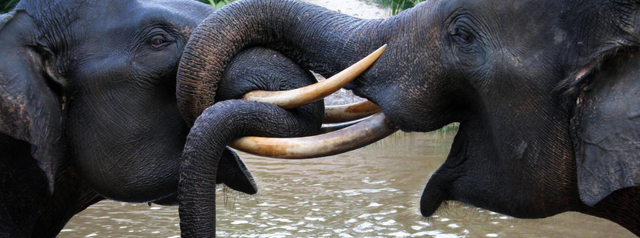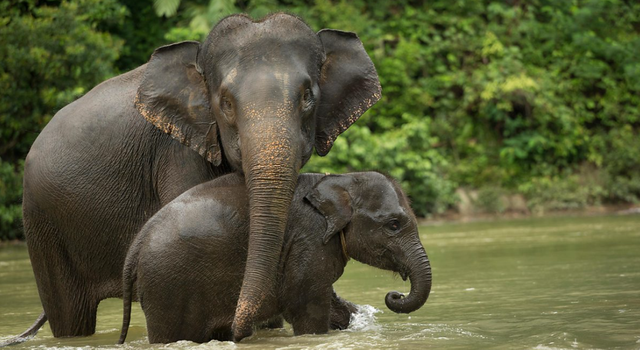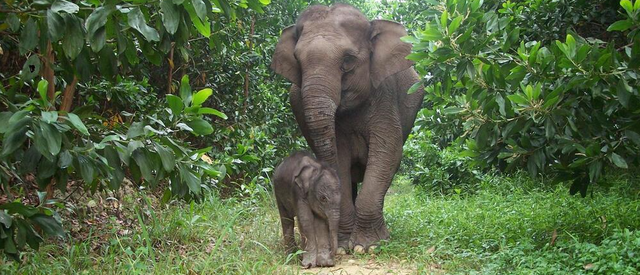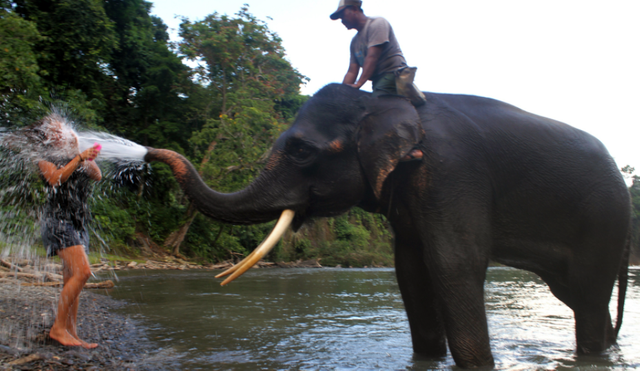Sumatran Elephant

Facts:
Sumatran elephants eat a wide variety of plants and scatter seeds across the jungle, helping to a healthy environment. They also share their lush forest environment with several other endangered species, including the Sumatran rhino, tiger, and orangutan, as well as countless other species that benefit from a healthy elephant population.
STATUS: Critically Endangered
POPULATION: 2,400 – 2,800
SCIENTIFIC NAME: Elephas maximus sumatranus
HEIGHT: 5-9 feet at the shoulder
WEIGHT: approximately 5 tons
LENGTH: up to 20 feet
HABITATS: Broadleaf moist tropical forests
Why They Matter

Sumatran elephants eat a wide variety of plants and scatter seeds across the jungle, helping to a healthy environment.
Threats
Deforastation and Habitat Loss
The Sumatran elephant was downgraded from "Endangered" to "Critically Endangered" in 2012 because half of its population was lost in a single generation, owing to habitat degradation and human-elephant conflict. Sumatra has one of the greatest rates of deforestation within the Asian elephant's range, resulting in local elephant extinctions in numerous regions. In the last 25 years, approximately two-thirds of the Sumatran elephant's natural lowland forest has been lost, and nearly 70% of the Sumatran elephant's habitat has been destroyed in a single generation.

Pulp and paper businesses, as well as oil palm plantations, have produced some of the world's fastest deforestation rates in Sumatra's Riau province. In less than 25 years, elephant numbers have plummeted by 80%, restricting some herds to limited forest tracts. Long-term survival is unlikely for these populations. The number of elephant herds in Lampung province has decreased from twelve in the 1980s to only three in 2002. Biologically, only two of the remaining herds are considered viable.
Human Elephant Conflict
Elephants frequently come into touch with human communities as a result of Sumatra's fast urbanization and deforestation. They plunder fields, trample homes, and occasionally injure or kill individuals. Those who have been harmed may revenge by poisoning or shooting elephants.

Poaching
The tusks of Sumatran elephants are normally smaller, yet they are enough to entice poachers to kill the animals and sell their tusks on the black market for ivory. Because only male Asian elephants have tusks, each poaching incident progressively skews the sex ratio, limiting reproduction rates for the species.